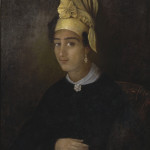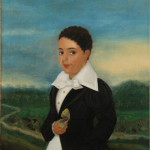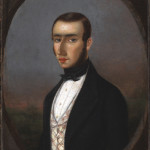Portraits by one of America’s earliest-known painters of African descent will adorn gallery walls when the newest exhibition, In Search of Julien Hudson: Free Artist of Color in Pre–Civil War New Orleans, opens this month. Portraiture plays a major role in art history and is a significant part of the Gibbes permanent collection; the portrait paintings in this exhibition by Julien Hudson and his New Orleans counterparts illuminate a fascinating era in New Orleans cultural history.
Many of the portraits in the exhibition portray the free men and women of color who were part of the early Creole population of New Orleans. This community took shape in the eighteenth century, first under French, and later Spanish, rule. Julien Hudson (1811–44)—himself a free person of color—was the son of a mixed race granddaughter of a former slave and a British merchant.
Prior to the Louisiana Purchase in 1803, the free people of color, or gens de couleur libres were considered a third caste, placed socially between the enslaved and the free white populations. They were afforded many of the same rights that whites enjoyed; they could own property, marry legally, enter contracts, and work in many industries. However, where they lived and traveled was restricted, and free women of color were required to wear a tignon or head scarf to indicate their status (see Portrait of Besty). After the city became part of the United States, the freedoms enjoyed by New Orleans free people of color slowly began to erode, and after the Civil War, their standing as a separate class from other people of African heritage was nullified.
Organized by The Historic New Orleans Collection and Worcester Art Museum, In Search of Julien Hudson: Free Artist of Color in Pre–Civil War New Orleans opens July 22, 2011, and is accompanied by an excellent catalog with essays by William Keyes Rudolf and Patricia Brady.
—Sara Arnold, Curator of Collections, Gibbes Museum of Art
Published July 18, 2011




